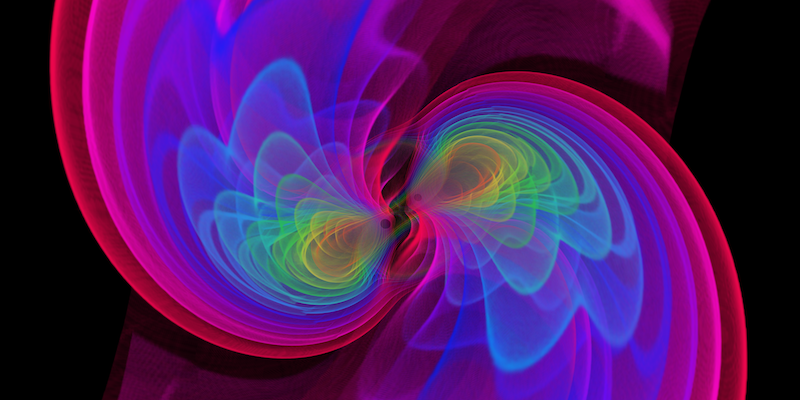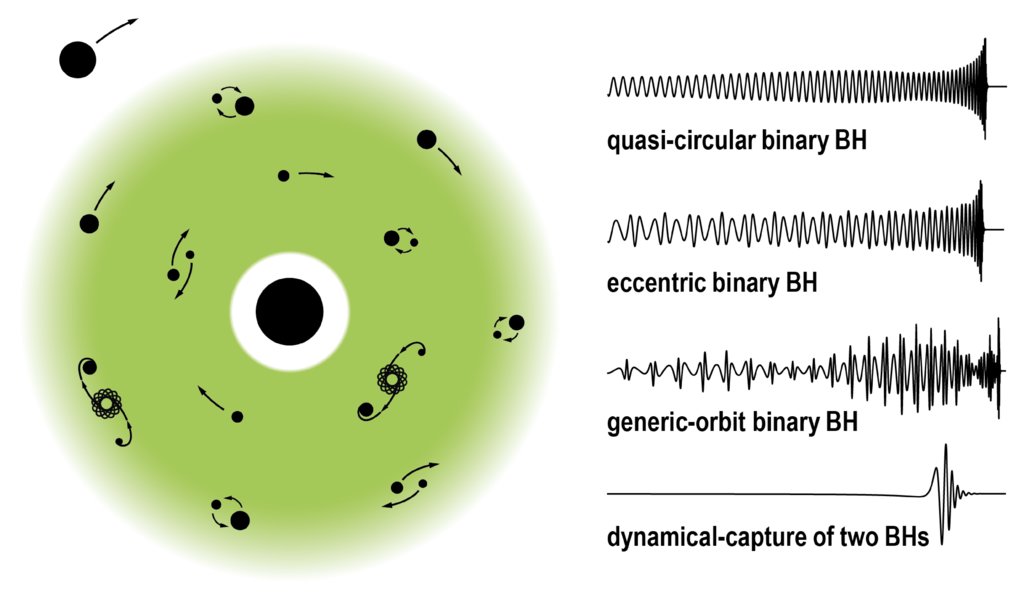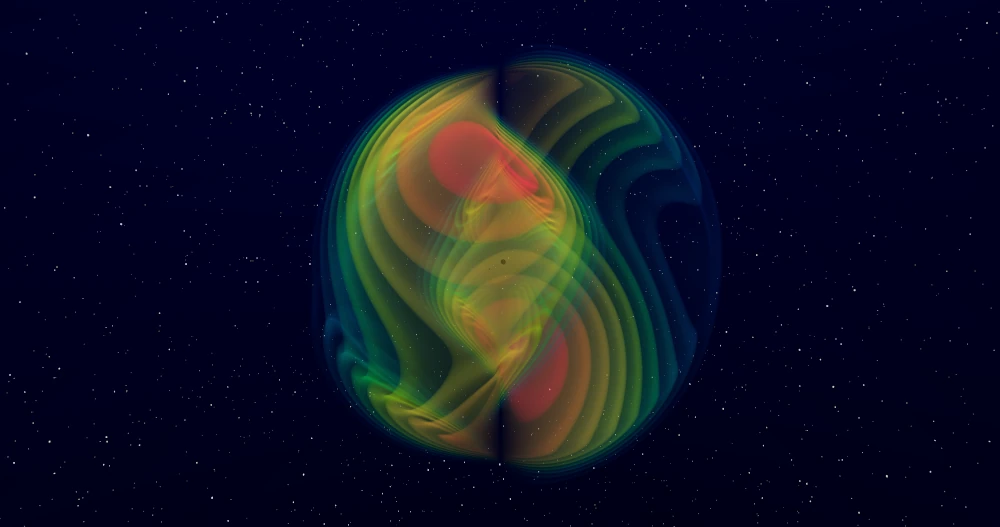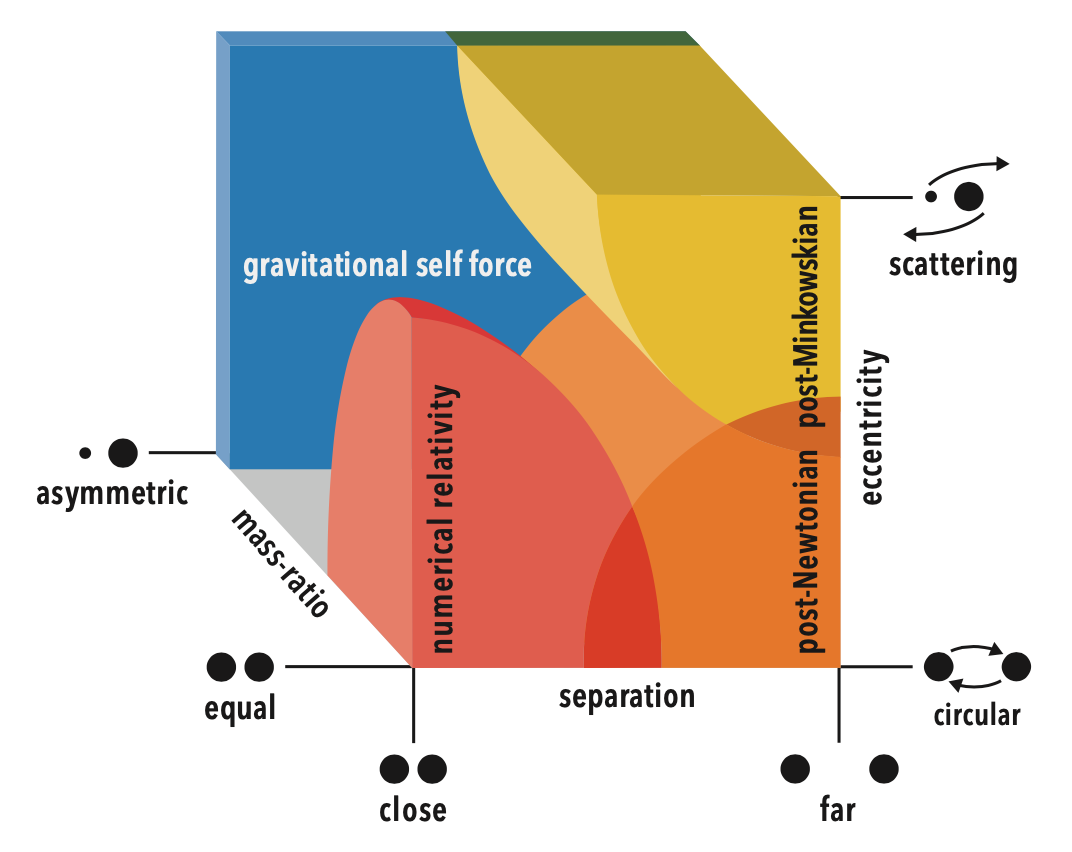The first detection of gravitational waves in 2015 by the LIGO-Virgo Collaboration featured a binary of stellar-origin black holes, each of more than 30 solar masses, merging at a sizable fraction of the speed of light. About three solar masses were converted into gravitational waves in tens of milliseconds, with peak power output more than 50 times the luminosity of all the stars in the observable (electromagnetic) Universe. During the first decade of operation, approximately two hundred such systems have been observed, including the merger of two neutron stars and mixed binaries. The neutron star mergers also produced electromagnetic signals, which were observed in the entire electromagnetic spectrum and provided unprecedented insights on nuclear matter and the origin of heavy elements. These remarkable achievements would not have been possible without the tireless efforts of experimental gravitational physicists, but also without strong theoretical support.

© S. Ossokine, A. Buonanno (Max Planck Institute for Gravitational Physics), Simulating eXtreme Spacetimes project, D. Steinhauser (Airborne Hydro Mapping GmbH)

© A. Carvalho
According to Einstein’s General Relativity, black holes are also among the simplest objects in Nature, being fully characterized by just a few parameters, i.e., their mass and spin. Nonetheless, because of their strong gravitational pull, black holes are key players in the Universe. For instance, they play a crucial role in galaxy formation (via feedback), determine the evolution of other astrophysical objects (e.g., stars, through tidal disruption), and also act as a lens for light and gravitational waves passing close by. This makes black holes superb astrophysical laboratories. Their merger’s luminosity makes them observable even at the cosmic dawn; their gravitational pull makes them unique probes of the surrounding astrophysical environment; their simplicity provides an opportunity to test the foundations of gravity and fundamental physics.
Despite their simplicity and beauty, black holes and their dynamics are still not completely understood in General Relativity. To unlock the full potential of present and future black holes’ observations with gravitational waves, theoretical advances (of up to two orders of magnitude in the precision with which we can predict their dynamics) are needed. While the revolutionary potential of black holes and gravitational waves as laboratories for astrophysics, cosmology, nuclear physics, and particle physics have long been recognized, and the necessary detectors have been or are being built, the necessary theoretical work remains a major challenge. The quantum nature of gravity is difficult to access in a laboratory, but these scales are, in principle, accessible close to black holes, thanks to the large gravitational redshift near black holes.
The theoretical groundwork is needed now, as the precision of gravitational-wave experiments is continuously improving, eventually leading to next generation detectors. These include upgraded current facilities, next-generation ground-based detectors such as the Einstein Telescope and Cosmic Explorer, as well as the space-based LISA mission.

© N. Fischer, H. Pfeiffer, A. Buonanno (Max Planck Institute for Gravitational Physics), Simulating eXtreme Spacetimes project

© A. Carvalho
GWSky will tackle the open theoretical problems from complementary directions, leveraging recent breakthroughs in the theory of gravitational waves in both the weak and strong field regimes. GWSky will establish a framework necessary to interpret the gravitational waves from black hole binaries, and provide the community with tools to disentangle different phenomena.
The project is organized around five specific aims:
- Precisely understand the nonlinear dynamics and emission of gravitational waves by isolated black hole binaries in vacuum.
- Enable precision gravitational-wave astronomy with efficient and accurate waveform models.
- Characterize astrophysical environments with black hole-binary dynamics.
- Unveil the dark sector and beyond-standard-model physics.
- Make sense of the gravitational-wave sky by delivering tools for precision gravitational-wave astronomy.
More broadly, GWSky’s goal is to turn gravitational-wave observations into precision laboratories, enabling detectors to reach their full discovery potential by developing innovative techniques to precisely solve the two-body problem in General Relativity and beyond, and by developing theoretical and data analysis tools that will establish if the inevitable deviations from current predictions are due to (1) the presence of very tenuous material media (gas or even dark matter/energy) in the environment of the gravitational-wave sources, or gravitational lensing, affecting the gravitational-wave propagation toward the Earth; (2) modeling systematics (i.e. inaccuracies in the two-body problem solution in vacuum General Relativity); or (3) genuine new physics beyond General Relativity. Through this approach, GWSky will prepare not only for the expected remarkable science, but will also provide the means to interpret unexpected discoveries.
